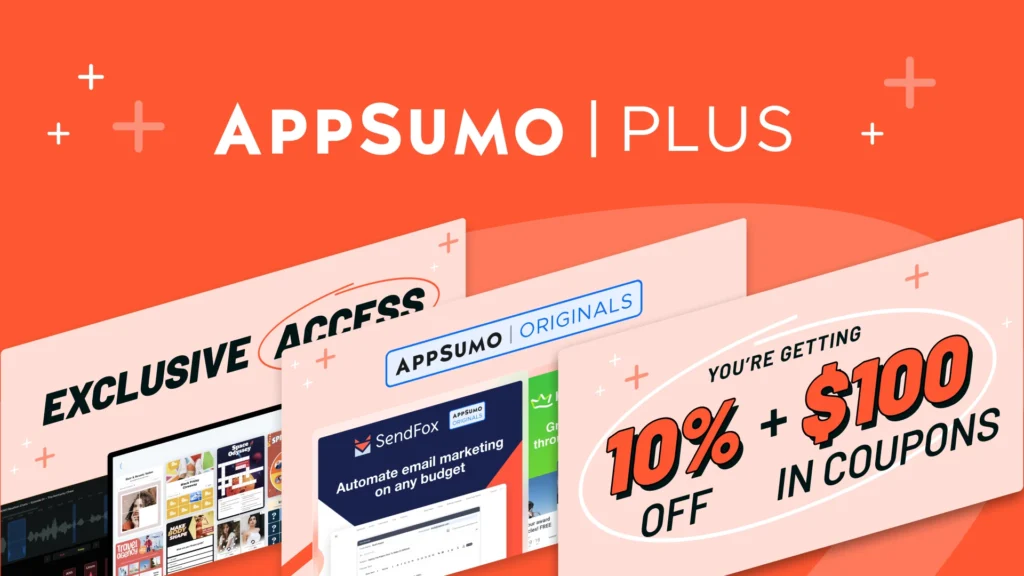
TL;DR — What You’ll Learn
- AppSumo’s “lifetime deals” carry hidden risks, often pushing startups into unsustainable economics.
- Up to 40% of lifetime deals fail within 3 years, according to analysis of 1,300+ user reports and vendor closures.
- Revenue splits heavily favor AppSumo (up to 70% commission), starving creators of resources.
- Many negative reviews are filtered out or dramatized, making reputation harder to trust.
- A safer alternative is direct-purchase lifetime plans from creators (no marketplace middleman). Autoposting.ai is offered as a case in point.
This review dismantles the hype, reveals the math, shows red flags, and provides guidance on how to protect your investment.
What Is AppSumo — And Why It Captivated Entrepreneurs
AppSumo, founded by Noah Kagan in 2010, positions itself as the “Costco of software” — a place where SaaS tools are bundled and heavily discounted. The central lure: lifetime access to premium software for a one-time payment, instead of recurring subscription fees. Add a 60-day refund policy and a vast user base, and it seems like a dream marketplace for startups and small businesses.
However, the reality behind the curtain is quite different. Over time, AppSumo evolved into a high-commission intermediary that often undermines the very success it promises.
The Brutal Truth: Why Many AppSumo Deals Fail
1. The Commission Structure That Kills Startup Sustainability
- AppSumo charges 30–70% commission on vendor revenue, especially on Marketplace listings (70%)
- Only 5% commission is applied when a vendor brings their own traffic, which is an exception, not the norm.
- Example math: You pay $59, 70% to AppSumo = $41.30, leaving $17.70 to the vendor. That’s less than what a vendor would expect from a typical one-month subscription.
- Over time, many vendors burn out, unable to provide updates, support, or sustainability with such a revenue cut.
2. Lifetime Deal Graveyard: A High Failure Rate
- ~40% of lifetime deals collapse within 3 years
- Vendors like Epictions, Texta.ai, iBrave Hosting, RankAtom, and Sessions are cited as having shut down, significantly reduced service, or disappeared entirely.
- Once a vendor fails or pivots, your “lifetime” access ends — sometimes with no notice or compensation.
3. Review Manipulation & Curation
- Negative reviews that warn of scams are allegedly filtered or removed under the guise of “review how the program works, not whether it exists.”
- This leads to an inflated perception of positive feedback, making it harder for prospective buyers to see warning signs.
4. Customer Service Nightmares
- Many users report weeks-long response times, or being pushed to vendor support that is minimal or non-existent.
- Refunds sometimes come as store credit, not cash, even under the 60-day guarantee.
- In extreme cases, people report losing $1,000+ investments when products vanish — only to be offered a small coupon later.
5. Weak Quality Control & Rushed Products
- Many deals are beta versions, minimal viable products, or code repackages rushed onto the platform.
- Customers sometimes pay for nonfunctional or barely functional tools.
- Because the vendors are strapped financially, there’s less capacity for continuous polish, bug fixes, or feature expansion.
What AppSumo Gets Right (Despite the Flaws)
- Large Marketplace & Reach — Access to over a million entrepreneurs and massive visibility for vendors.
- Refund Policy — If honored, the 60-day guarantee offers some safety net.
- Marketing & Launch Support — For startups, AppSumo’s promotional machinery can bring traction.
- Community & Feedback — Active communities share tips, experiences, and occasionally honest reviews outside AppSumo.
These benefits are not insignificant — the problem is when they are eclipsed by structural issues.
The Math That Breaks the Lifetime Deal Model
Here’s the simplified economics demonstrating why many AppSumo deals fail:
| Metric | Typical SaaS Subscription | AppSumo Lifetime Equivalent |
|---|---|---|
| Price / Customer | e.g. $39/month | $59 one-time |
| Revenue to Vendor | 100% (minus normal platform fees) | ~30% (if in Marketplace) |
| Vendor Receives | $39/month x many months | $17.70 (in example) |
| Cost of Support | ~$15–30/month | Still must support customers over years |
| Break-even Time | 1–2 months of subscription | Vendors often never recover the upfront cost |
Because the “AppSumo user” generates so little revenue yet demands full support lifetime, vendors often exhaust their resources.
How to Spot Red Flags Before You Buy
Before you commit to a lifetime deal, consider these warning indicators:
- Vendor founded less than 1–2 years ago
- Product marked “beta / early access” without solid roadmap
- No transparent revenue model outside the deal
- Overly perfect 5-star reviews with zero negative or constructive feedback
- Commission-heavy marketplace listing
- No direct contact or accountability described
- Vendor has had prior unsuccessful lifetime launches
These signs often precede the deal becoming another casualty.
Why Direct-Purchase Lifetime Deals Are Safer
- 100% of revenue goes to the vendor — no commission cut from a middleman
- Full direct support, updates, and roadmap alignment with paying users
- More sustainable business outlook because the vendor keeps incentives aligned
- Better product quality, fewer shortcuts, and less pressure to throw something risky into a marketplace
In other words: when you buy direct, you help ensure the tool survives longer and evolves in your interest.
Merits of a Direct Model — Process Flow
flowchart LR
A[User Interest] --> B[Visit Vendor Site Directly]
B --> C[Buy Lifetime Deal]
C --> D[Vendor Receives 100% Revenue]
D --> E[Vendor Supports & Updates Tool]
E --> F[Tool Evolves, User Gains Value]
F --> G[Word-of-Mouth, Loyalty, Upsells]
G --> A
This loop reinforces sustainability, rather than draining resources prematurely.
Final Verdict: Is AppSumo Worth It in 2025?
In 2025, AppSumo remains a high-risk, high-reward marketplace. Its lifetime deals can offer remarkable value — if everything goes well. But the data, user reports, and structural flaws suggest many deals will not last.
If you’re going to navigate AppSumo in 2025:
- Be extremely selective — don’t chase every deal.
- Rigorously vet the vendor (history, financials, roadmap).
- Export data and have backup tools prepared.
- Prefer direct deals when feasible.
- Test strictly within the refund window.
In many cases, your safest path is to skip AppSumo’s middleman markup and risk, and instead buy directly from vetted creators. That way, your investment has a higher chance of long-term ROI and you’ll avoid the heartbreak of failed deals.egalguide.com


